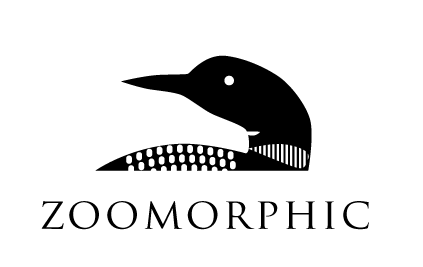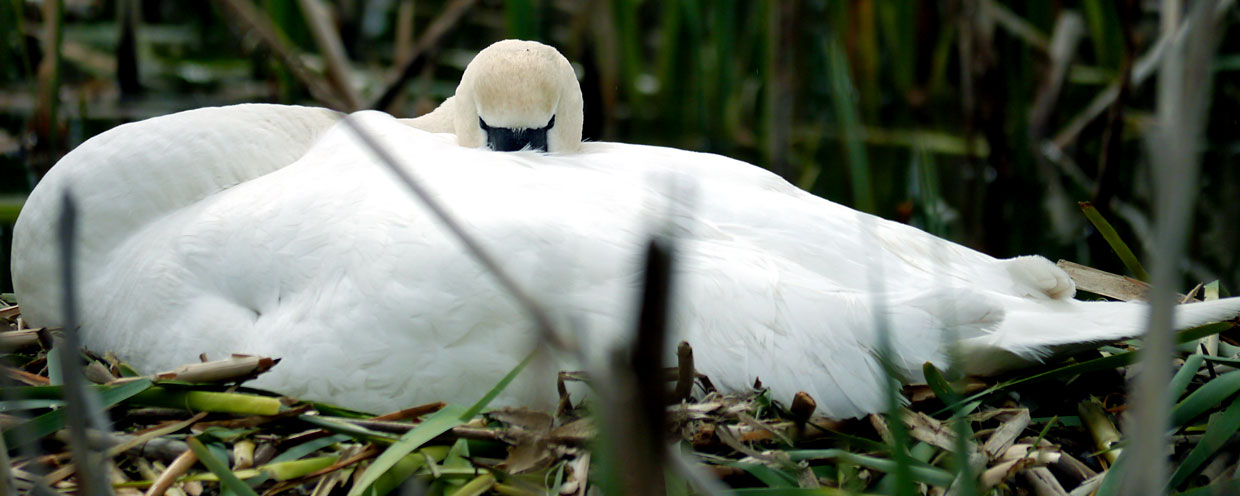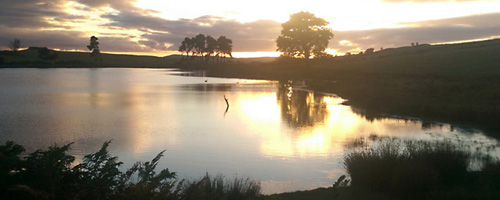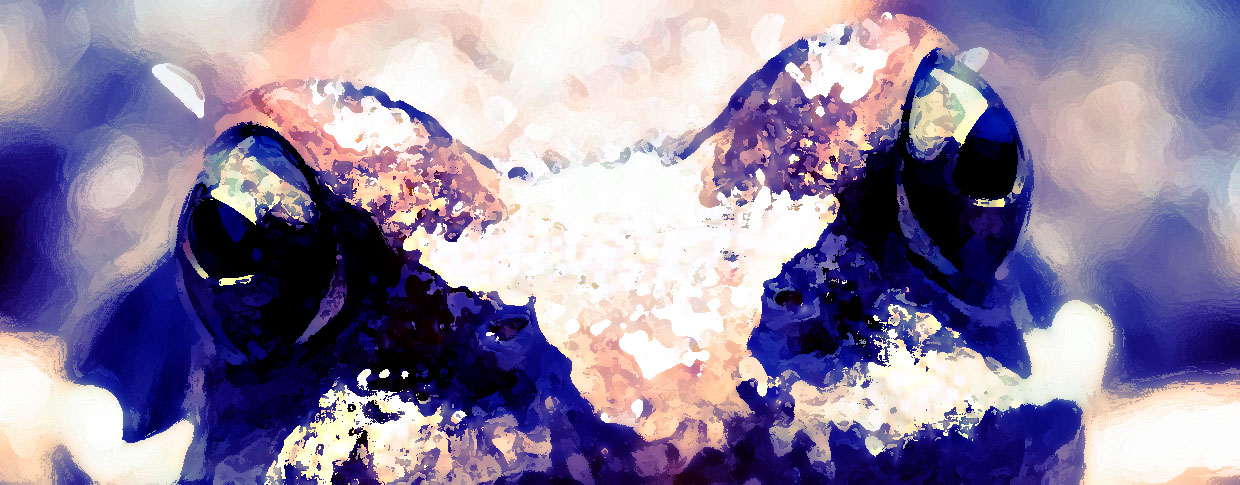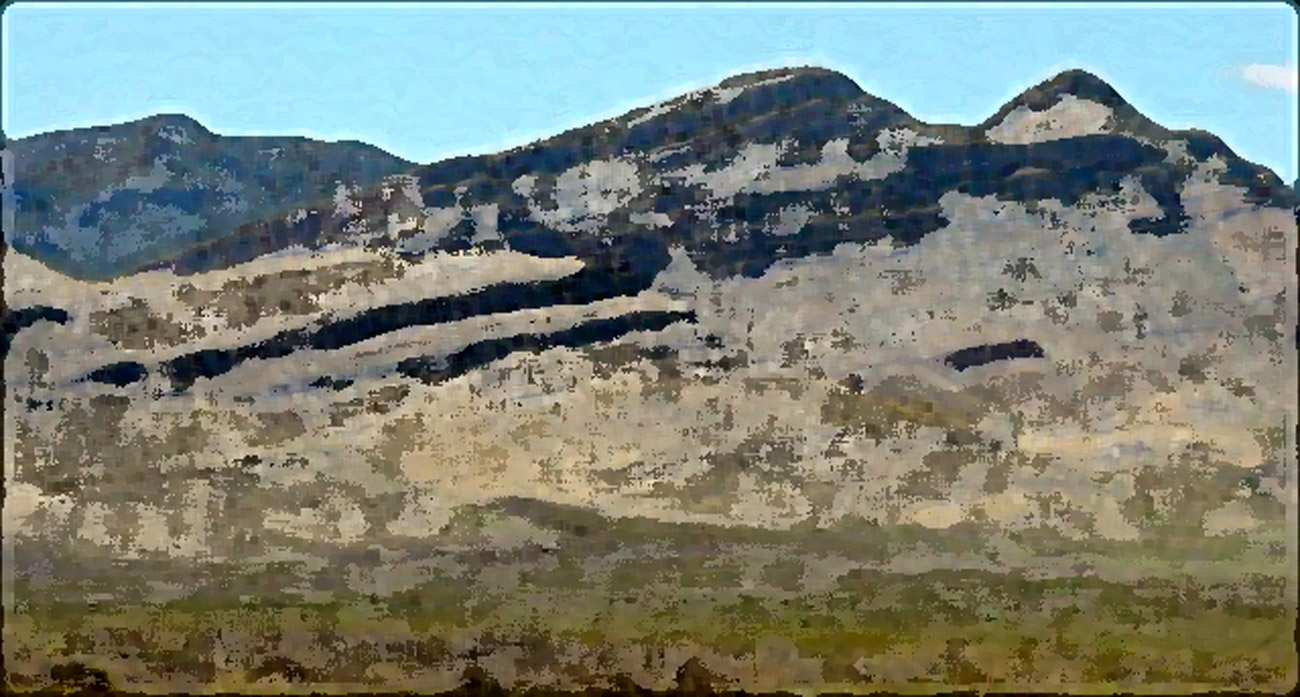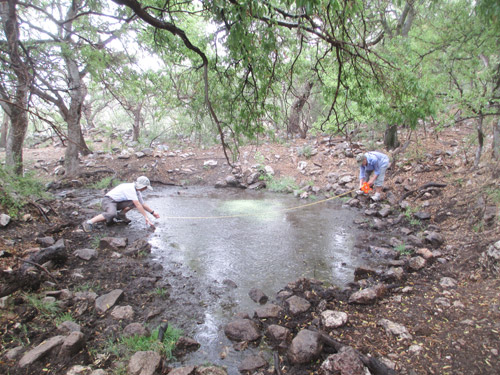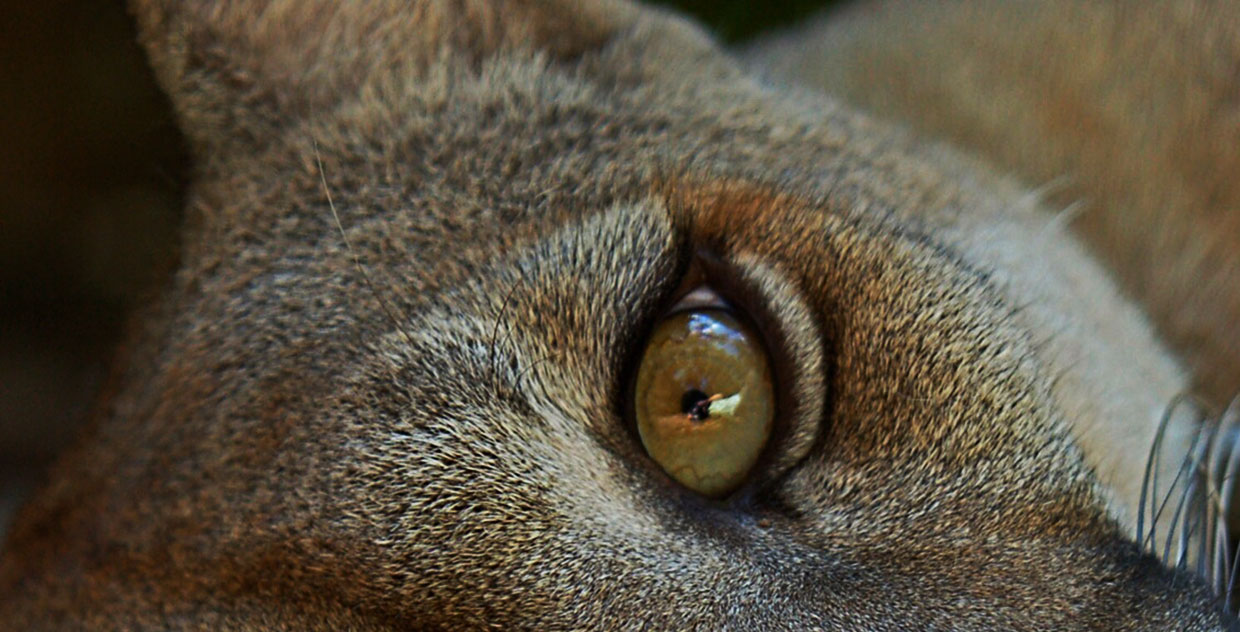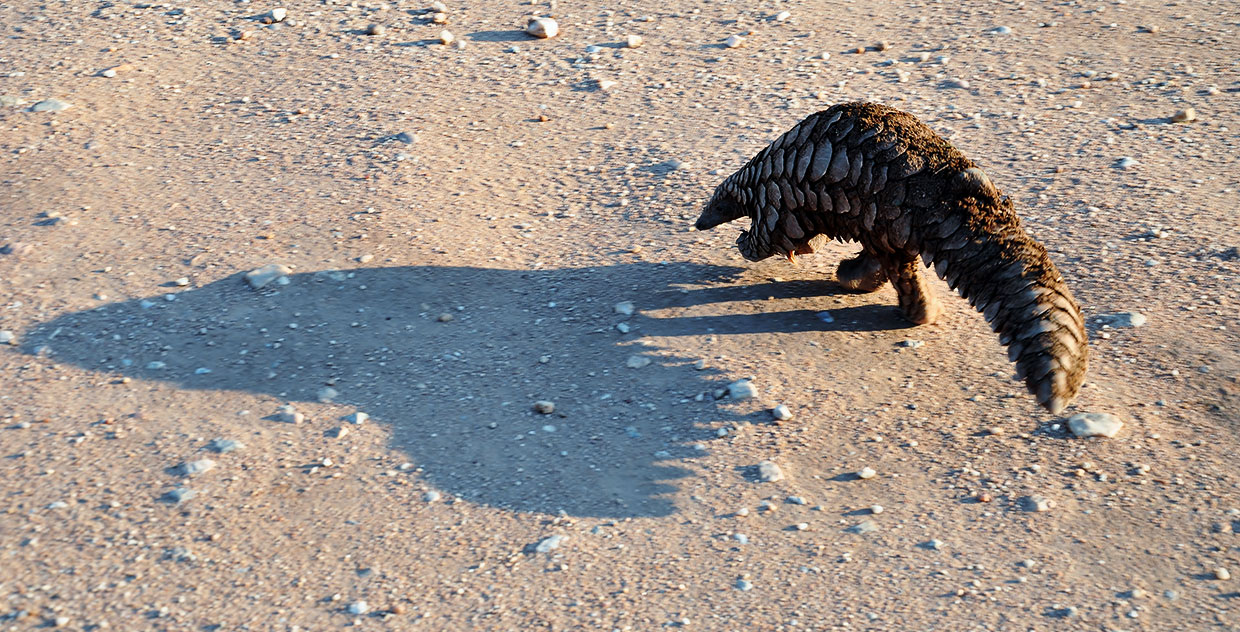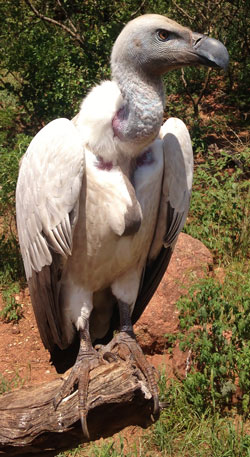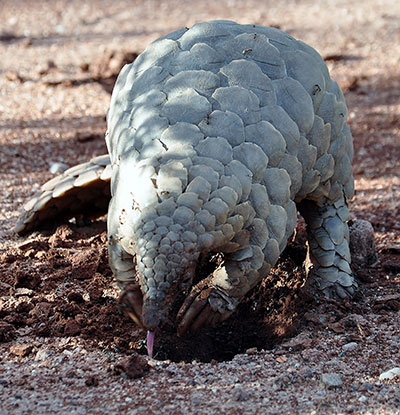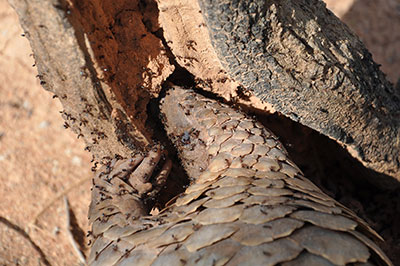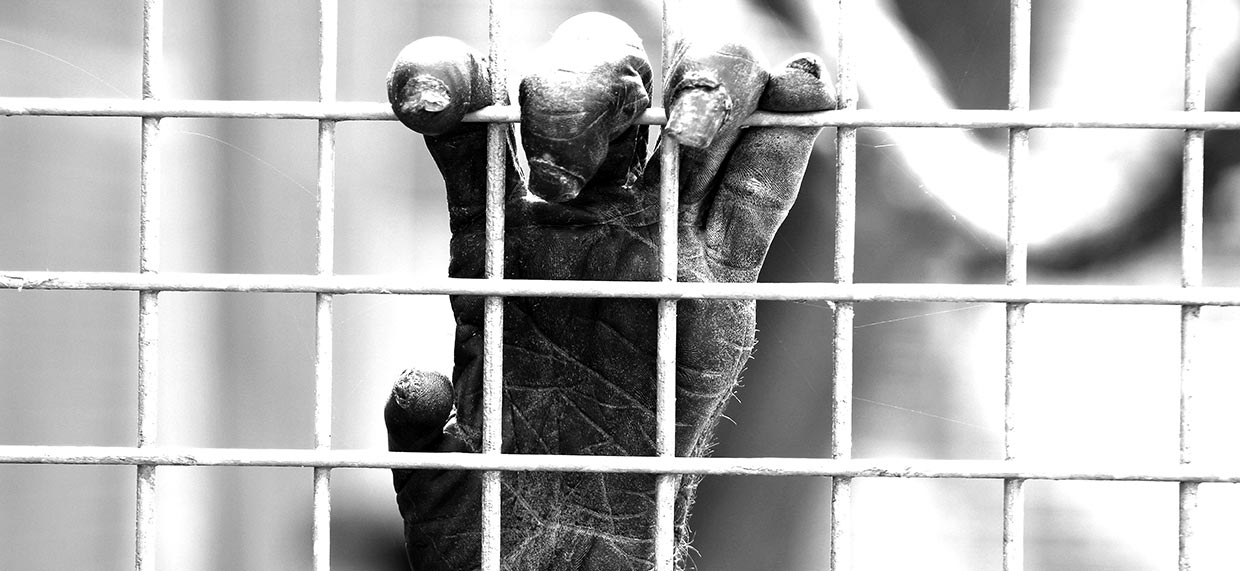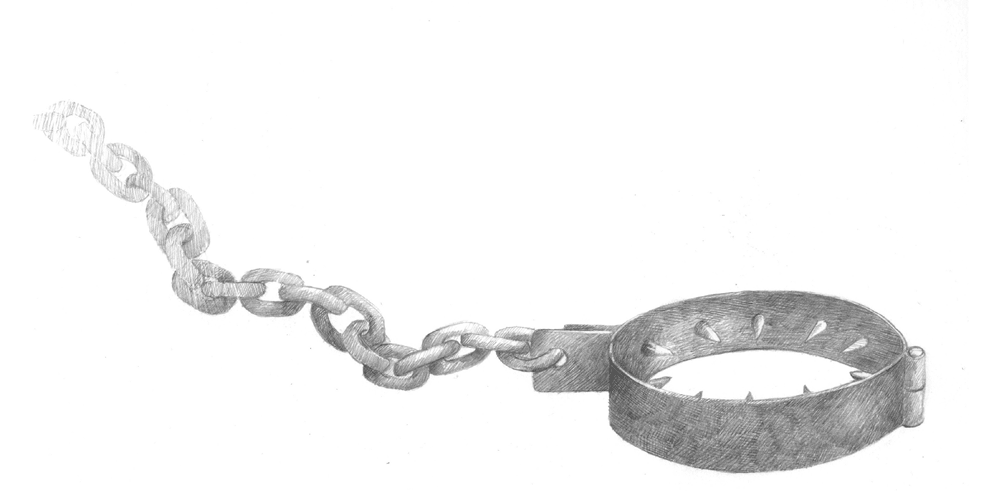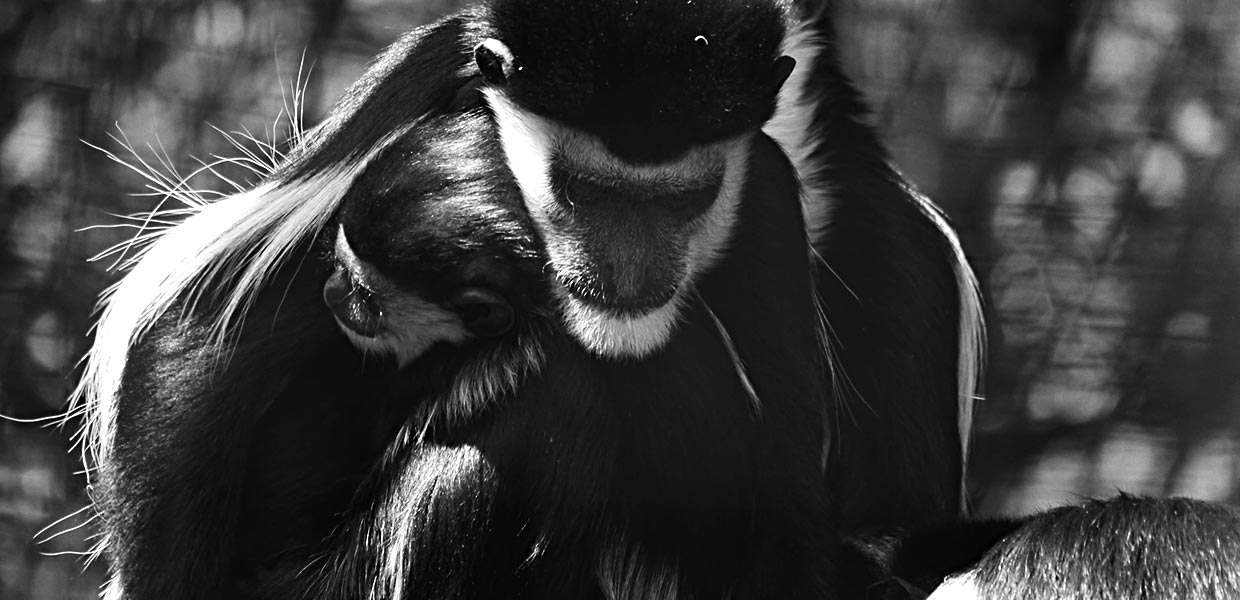By Laura Coleman
Sweat cascaded down my face, dripped hot and wet down my back and fused at the base of my spine. Mosquitoes buzzed around me, a black cloud that parted and pooled as I walked. My head was covered by a tight net, tucked into the double collars of my two long sleeved shirts, the sleeves buttoned and carefully inserted into thick gloves. But the mosquitoes – the green and the gold, the angry purples and the shy ones with the sapphire blue wings – dive-bombed my forehead, my ears, the tip of my nose, the backs of my shoulders, the flabby bits at my hips, the tops of my fingers, anywhere that my skin touched material. I itched constantly, not just from the mosquito bites but from the lice that were crawling in my hair and from the most recent attack of scabies that wouldn’t seem to budge. I know a good home remedy for scabies but I’m all out of the required supplies so I would just have to put up with the infection. My trousers were wet up to the crotch, where I’d waded through the black swamp on my way out into the jungle, and my rubber boots made a nasty sucking sound in the mud. It hadn’t rained in days, and the swamp was lower than it had been, but still it was misery. I was lucky though – most parts of her territory were dry. But that meant the trails were covered in leaves. She didn’t like leaves. And so here I was, at six on a Sunday morning with one hundred per cent humidity, raking leaves off the forest floor. The rake was old and rusty, and fifty per cent useless. I had new blisters too, blooming across my skin. I was desperate for the loo, but I would rather urinate though my wet trousers than expose my soft behind to the bugs. In one slap, I could kill over one hundred mosquitoes, easy. Feeling my strength beginning to flag, I transferred the awkward wad of coca leaves in my cheek to the other side, pushing it across with my tongue. The bitter juice from the leaves entered my blood stream, giving me energy. This was why I was still standing, rather than curled up in an exhausted, beaten ball of human flesh. Coca and, of course, her.
The puma (Puma concolor), also commonly known as cougar, mountain lion, panther, or catamount, is a large felid of the subfamily Felinae native to the Americas. They are the second heaviest cats in the region, after the jaguar, and their coats range from brown to tawny to deep grey. Solitary by nature, they are nocturnal and crepuscular. The puma is an ambush predator, and they prefer dense underbrush and rocky areas for stalking. They are also the largest felines in the world that can purr.
Ten years ago, I had a vague sense that a puma was a cat, probably a large one, but that was as far as my knowledge went. I had no sense of the jungle, beginning to brush its dark leaves against the very edges of my future, and no sense at all that a puma was going to be the thing that would change my life for good. I had finished an MA, and was working happily in the city, wearing smart suits and pointy shoes, relishing the buzz and smog of London. I was, at the same time, on the verge of beginning a PhD, which I planned to centre on the obscurity of eighteenth century art. Life was good. But, the thought niggled, I had never really travelled. And I wanted to do that before I settled into the dusky life of an academic.
So I went to South America. Not for too long, I wanted to be back in England for the summer festival season, for the picnics in Hyde Park and the late evening drinks in Covent Garden. I bought a three-month ticket to Bolivia. I knew nothing about Bolivia, only that it was the cheapest country on the continent.
I travelled. I did what normal travellers did – I visited the salt deserts and the canyons with the condors, I went on a carefully curated Amazon tour, I saw the place where Che Guevara was executed and I lost a few weeks in La Paz, the world’s highest capital city. I enjoyed it, but half way through, the rootlessness of backpacker life began to get me down. I kind of wanted to go home. Flirting with the idea of moving my flight forward, I was sitting in an internet café in a hot northern town, when a random flyer caught my eye. There was a cute photo of a monkey on the front. I picked it up, and read: Volunteer at Ambue Ari animal refuge. Stay for two weeks or a month and work with rescued exotic wildlife. I considered this. I didn’t really want to change my flight, and maybe staying in the same place for a few weeks would ease my craving for stability. And monkeys were fun, right? So I got on a bus; five hours later I was getting off again, on a straight tarmac road deep in the Amazon jungle.
The first creature I met was a pig. A black pig, almost the size of a small cow, with sharp yellow teeth, beady brown eyes, a long wiry-haired snout and a smell like month old sewage. She was watching me when I got off the bus, a bright red bra hanging incongruously from her mouth. Our eyes met, and then she snorted, and turned, and disappeared down a small trail into the trees. Not knowing what else to do, I followed her. The trail was thin and winding, and every few yards a new trampled piece of underwear lay forlornly in the mud.
The second creature I met at Ambue Ari was a person, but one that smelt almost as bad as the pig and was just as dirty. The path opened up into a ramshackle clearing, spread about with various wooden huts and benches. Washing lines, presumably the source of the pig’s pilfered goods, hung about the place. A man, adorned with a formidable beard, looking to be, like me, in his mid-twenties, approached. He had a lump in his cheek, which I would have thought was some kind of growth if he hadn’t opened his mouth to speak, and I hadn’t seen the inexplicable edge of a wad of leaves. I recoiled. His teeth were stained green, and green-black saliva bubbled on his lips.
“You here to volunteer?” he grunted.
I looked down at myself. My clean jeans, my bright white trainers, my impeccably packed rucksack, my soft skin and shining, newly washed hair. I wasn’t so sure. The pig, bra lost, suddenly reappeared covered in wet compost. She began to rub her snout up and down the man’s leg, emitting a smell from her behind like old urine. And then a huge monkey, red as fire, swung down from a tree and landed with a howl on the man’s shoulders. The monkey bared his teeth, and exposed his erect penis. And then it wasn’t just the man, the pig, the monkey and me – there was a whole crowd of people, all feral. They took my backpack, covered me with their sweat, showed me a bunk in one of the wooden huts, and signed me up, reluctantly, for two weeks.
The camp was run by Bolivians, but the majority of the volunteers were foreigners like me. They were a motley collection, and there were no more than ten at most when I first arrived. Some people had been there weeks, some months, some years. Pigs, monkeys, birds, deer and tapirs lived in and around the camp. They had all been rescued from the black market, some with the intention of release but most – due to governmental legislation, the animals’ inability to look after themselves, and lack of resources at the camp itself – were there for life. The red monkey, who I quickly learned had a penchant for flashing his penis at women, had lived in a hotel in La Paz – where he had smoked cigarettes, watched TV and drank alcohol – until he became too aggressive. His owners had then left him at Ambue Ari. He was terrified of the jungle, and he was happiest when reclining in the bunk beds of the female volunteers. But he was a sad animal, and would often sit forlornly on the aged camp motorcycle, staring at his own reflection in the solitary wing mirror. Sometimes, he would attack people. Men, specifically the tall ones with dark beards, and then afterwards if not prevented, he would beat himself, or find his way to the road to sit suicidally in the middle of the tarmac. It was this that made me first fall in love with Ambue Ari. This monkey – his name was Coco – was never put in a cage. He hated cages. If he attacked someone, that person had to leave. Ambue was Coco’s home, and it was our job to make him as happy as we were able. His comfort was primary, and ours – as human volunteers – was secondary.
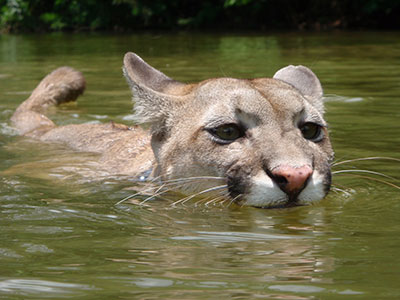 At that time, Ambue cared for about fifteen big cats. Jaguars, pumas and ocelots. They lived deep in the jungle. They each had their own cages and their own walking trails, and it was taboo to go and visit a cat that was not your own appointed charge. These cats had no hope of release, and for them stability and peace was essential. Some of them were happy; some of them were volatile and scared. They were given as much enrichment as was possible – some walked and swum with volunteers outside of their cages, others were simply too aggressive or playful to be in close contact with humans.
At that time, Ambue cared for about fifteen big cats. Jaguars, pumas and ocelots. They lived deep in the jungle. They each had their own cages and their own walking trails, and it was taboo to go and visit a cat that was not your own appointed charge. These cats had no hope of release, and for them stability and peace was essential. Some of them were happy; some of them were volatile and scared. They were given as much enrichment as was possible – some walked and swum with volunteers outside of their cages, others were simply too aggressive or playful to be in close contact with humans.
If there were enough volunteers, each person was given one cat, and the full time care of that cat was their responsibility. The ocelots had one appointed volunteer, the pumas and jaguars two, sometimes three. If you wanted to work with a cat, you had to stay for a month minimum. When I learned this, I extended my stay. I was given an ocelot, called Lazy Cat. She was appropriately sleepy, calm, and affectionate. We spent a glorious month together. Every morning I trekked out into the jungle to her cage. And then on a rope looped around my waist, we walked together through the trees. Her in front, stalking sunbeams and monkeys; me behind, trying to keep quiet. When she got tired, she would lie down and I would sit next to her, and watch her sleep. At six in the evening, we would go back to her cage. I would feed her and then return to camp, where I would while away the candlelit nights with the other humans, playing cards and watching the stars.
My month passed quickly. I loved the freedom of the place. I loved the forest and the trees, the easy purpose of placing the care of an animal above yourself, and the lack of electricity, hot water, phone signal and internet. I slipped into the remoteness of it with an ease that surprised me, and I found that I enjoyed not showering. Wearing the same muddy clothes each day was a relief rather than a hardship. But my flight home was looming. I was sad about it, then just as I was beginning to pack, the woman who was in charge said to me:
“Quieres irse?” (Do you want to leave?)
I shrugged.
“Hay un puma, quien es muy triste y dificil. Pienso que te quedas y cuidas de este puma, si? Se llama Wayra.” (There is a puma, who is very sad and difficult. I think you stay, and look after this puma, yes? Her name is Wayra.)
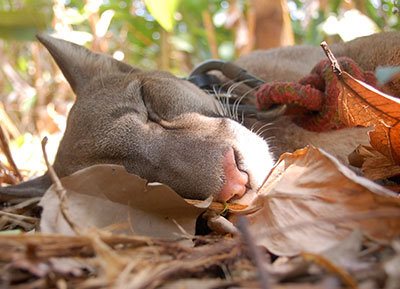
I don’t know if I felt something then, something that felt like fate, but I know I didn’t put up much of a fight. I hitched a ride into town and extended my flight for another three months. Life at the refuge was cheap, and whilst my savings would not have lasted in London, in Bolivia I had more than enough. The next day, I began my training with Wayra.
She was terrifying. She was the size of a very large dog, and her coat glimmered silver under the shadow of the trees. The first time I saw her, Wayra launched herself at me with such a depth of anger that, if it hadn’t been for the fence between us, I thought she would have killed me. Her claws were razors, her teeth sharp and huge. Saliva dribbled down her chin. Her eyes were black, swollen and frantic. She hissed unceasingly, racing back and forth, back and forth, giant paws beating the compacted dirt, and then she launched again, the fence bowing dangerously. I backed away.
This was Wayra. Her mother had been killed by hunters; she’d been sold on the black market as a house pet. At ten months, she’d then been left at the refuge. I met her when she was three years old. She was thin, and only ate when she was happy – which, at that time, wasn’t very much. Her mood could change in a second. One moment she’d be relatively calm, and the next she’d be spitting and hissing and acting like the world was crashing down around her ears. She was terrified of everything, from the brush of a gust of wind to the crunch of a leaf under her feet. She’d jump, all four paws in the air, and then turn on you, incensed that you had the gall to think her afraid.
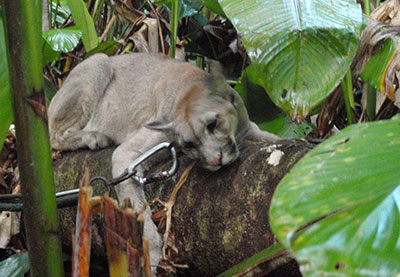 We would attach a rope to her collar through the safety of the door, and then attach this rope to a long ‘runner’ – a sturdy cord that ran for thirty metres between her cage and the start of her trail. This was a way for her to be outside her cage, but as independent as possible. She’d lie down and sleep, and ignore me. If I dared to breathe too loud, she’d raise her head, eyes flashing, and hiss.
We would attach a rope to her collar through the safety of the door, and then attach this rope to a long ‘runner’ – a sturdy cord that ran for thirty metres between her cage and the start of her trail. This was a way for her to be outside her cage, but as independent as possible. She’d lie down and sleep, and ignore me. If I dared to breathe too loud, she’d raise her head, eyes flashing, and hiss.
When she wanted to walk, she’d pace to the beginning of her trail and stare at me distastefully. If I made her wait too long, she would let me know by growling, sometimes faking a lunge, teeth bared. When she walked, she had to have someone in front, a bodyguard, someone on whom she could focus herself. This was in part protection, and in part a way (I think) for her to forget that there was also someone behind her, someone who had a rope, someone she was attached to. This, she hated. She could walk for hours, running and stalking – and seem happy. But then, something would happen. The person behind would stand on a stick, or a leaf, and then she would spin and she would hiss and she would flinch back in fear and confusion, and then she would growl and hiss again and bolt, racing and hissing and growling and spitting all the way back to her cage.
Then we would all fall asleep, exhausted, and I would wake up to her licking my face.
I fell in love with Wayra quicker and more deeply than I have ever fallen in love with anyone. I stayed, that time, over four months. By the time I left, she seemed calmer. I left because I felt I should, because it wasn’t reasonable to spend so long in the jungle, was it? But I couldn’t go back to England – I’d already missed my flight anyway – so I travelled again. I travelled to Columbia and Ecuador, Chile and Brazil and Argentina. I travelled for a year, treading a giant loop around South America until eventually I found my way back to her.
I have now spent the better part of the last nine years with her. I stay for as long as I can – sometimes a few months, sometimes a year – and then I return to England where I am always, without fail, floored by culture shock. I think about her, all the time, and I miss her deeply. I now live more in England than I do in the jungle, but I go back as much as I can and so far she has always remembered me. She has her ups and downs. She is more happy than not, but she is still Wayra. The world – the human world – has done her a terrible injustice, but her capacity for trust and patience, love and compassion is immense.
Ambue has over thirty cats now, and needs more than forty volunteers at any one time to function properly. Logging trucks speed by every day, wild cats crowd our paths because their territories are shrinking, and rescued animals relentlessly turn up needing homes. Wayra is not alone in her frustration and fear, and neither am I. There are many others like me, volunteers (often with no prior experience of animal care) who’ve found the refuge, who’ve connected with a particular animal, and had their lives changed because of it. I never ended up doing a PhD. I started an arts/ecology charity called Onca. I wanted to tell stories about her, and then I saw that other people wanted also to tell stories about their own connections with the changing nature of the wild. So I opened a gallery, specifically for these kinds of stories. Essential, life-altering stories that offer a way to help us re-imagine our role on this planet. To re-imagine who we are, as humans and as animals, just as Wayra has done for me.
Ambue Ari is one of three animal refuges run by the Bolivian NGO, Comunidad Inti Wara Yassi. They are always in need of volunteers. For more information on how to help, visit www.intiwarayassi.org
Laura Coleman is the Founder and Director of Onca, a small charity inspiring creativity and positive action in the face of environmental change. She is based in the South East of England at the Onca Centre for Arts and Ecology, curating an ongoing programme of exhibitions, workshops and events. She also acts as a consultant for artists and arts organisations, sharing her understanding of the growing need for new interpretations of our changing planet. In addition, Laura is a writer, public speaker and explorer. Since her early twenties, she has been rescuing and rehabilitating exotic wildlife in the Bolivian Amazon. www.onca.org.uk
All images by Laura Coleman
